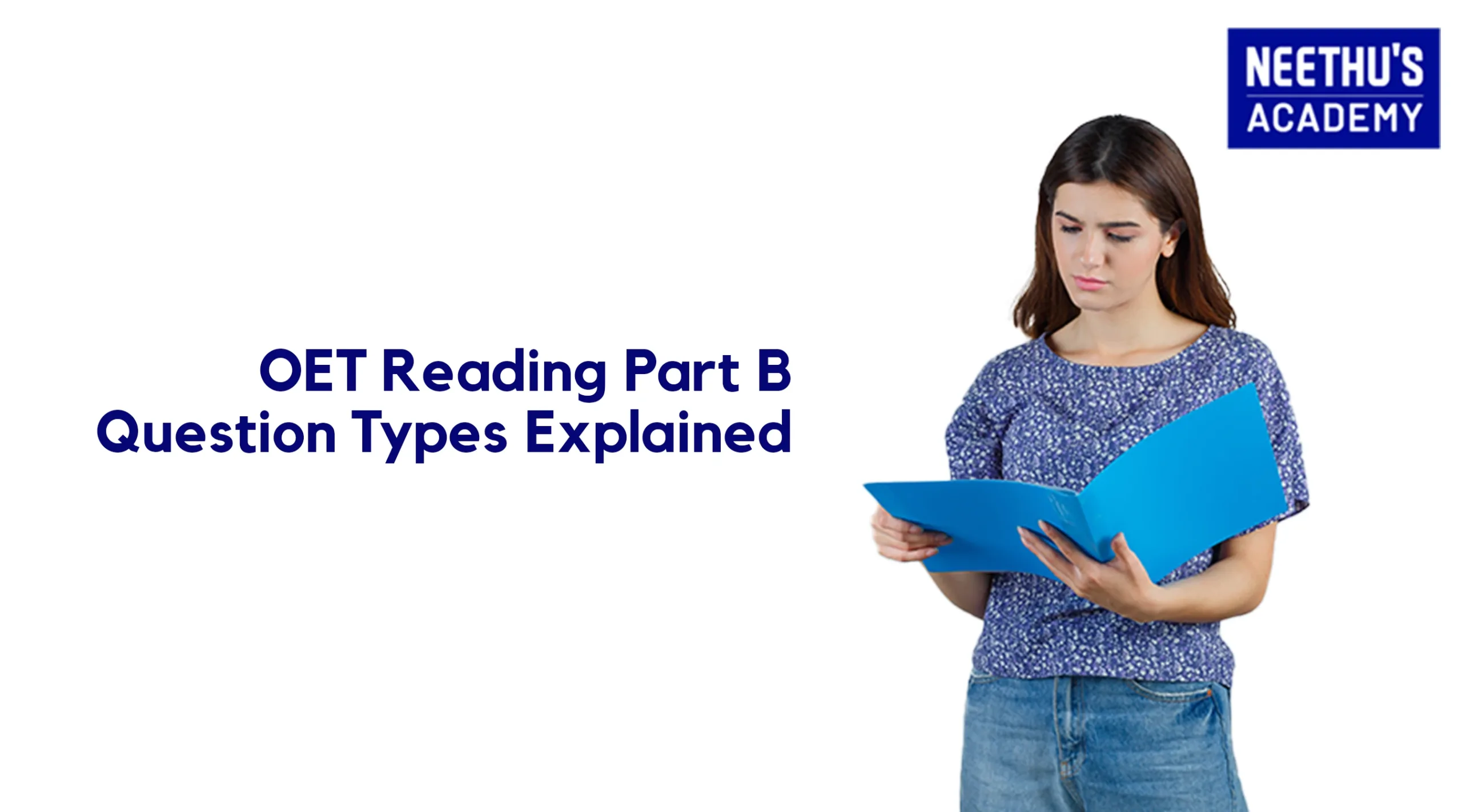Mistakes to avoid: Commonly confused words in OET Writing
The English language can be quite tricky with some of its words, considering the rich history of borrowing terms from many languages coexisting with their own rules and nuances. This is further confused because of the existence of words that sound alike but have different meanings, and words that are spelled the same but have different meanings. Also, there are so many words in English that are almost similarly spelled but are very different in meaning and usage. Often, it is this complexity that results from the development of the language and the fusion of Anglo-Saxon, Latin, and other linguistic influences. Mastering and using these correctly is quite a challenge even to learners and native speakers alike. More specifically, word choices must be exact and vivid with the Occupational English Test.
One of the key examinations health professionals take to practice in an English-speaking environment is the Occupational English Test. The OET writing test is said to be the most difficult among all tests, where accuracy and clarity are prime requirements. However, a lot of candidates fall prey to commonly confused words, further resulting in miscommunication and decreasing the overall marks. This blog will explore the top commonly confused words in OET writing: medical terminologies, general vocabularies, and homophones/homonyms. By understanding and addressing these confusions you can improve the accuracy of your writing and maximize your OET scores.
How Important is the Accuracy in the OET Writing?
The OET writing test should be error-free since healthcare professionals are exposed to actual clinical scenarios that need them to engage in their profession. This indirectly implies that wrong word choices may result in miscommunication, misdiagnosis, and errors while attending to a patient. Candidates must develop an interest in the subtleties of words in English, especially in their usage within the medical context, so that they convey the right information in the best manner for proper understanding.
Context in Medical Communication
Everything in medical communication is contextual. Words that may seem synonymous in layman’s language can have extremely different meanings when in a clinical setting. Take “acute” and “chronic,” which often get mixed up but really have very different meanings for the care of the patient. Knowing the differences helps appropriate and effective communication.
Impact on Patient Safety
Misunderstanding commonly confused words can lead to critical patient safety issues. A very good example is mixing up “affect” and “effect,” which changes the meaning of symptoms or treatment outcomes of a patient. That is why being right about the selection of words is indispensable to maintaining top standards of care and safety for patients.
Confusing Words in OET Writing
Medical terms
1.Affect vs. Effect
Affect : it is an action that changes something. For example, “the medicine did not affect the patient’s health”
Effect : it is the result of an influence. Example: “The medication’s effect was immense”.
2.Acute vs Chronic
Acute: it is used to describe a condition that is severe and sudden in onset. Example: “I suffered from acute insomnia.”
Chronic: it describes a condition that is long developing and persists over time. Example: “The patient has chronic arthritis.”
3.Adverse vs. Averse
Adverse: Causing harm or unfavorable. Example: “The patient developed adverse effects from the treatment.”
Averse: Feeling a strong dislike or opposition. Example: “The patient is averse to taking medication.”
4.Hyper vs. Hypo
Hyper: it is something that has a high degree. Example: “The patient suffers from hypertension, meaning high blood pressure.”
Hypo: it is something with low levels. Example: “The patient suffers from hypoglycemia”
5.Diathesis vs Diastatis
Diathesis: it refers to the physical nature of the body that makes it prone to certain diseases. Example: “The boy’s diathesis to allergies was evident from a very young age”.
Diastasis: it refers to the division or dislocation of two bones. Example: “Due to diastasis, a gap in the abdomen muscles was formed”.
6.Prostrate vs Prostate
Prostrate: it refers to something or someone that is lying or bowing down on the ground. Example: “The man was instructed to lay prostrate”.
Prostate: it is a noun referring to a gland in the male reproductive system. Example “ Prostate health is important for men as they age”.
6.Viscous vs Viscus
Viscous: it refers to a substance with a sticky, thick texture. Example: “ The blood was viscous”.
Viscus: it refers to an internal organ of the body. Example: “The viscus tissue was examined”.
7.Enuresis vs Anuresis
Enuresis: it refers to the incapability to stop bedwetting.
Anuresis: it refers to the condition where one is unable to urinate.
General Vocabulary
1.Advice vs. Advise
Advice: it is a noun, meaning recommendation or guidance. Example: “The nurse gave the patient some advice on diet.”
Advise: it is a verb that means to recommend or advise. Example: “The doctor advised the patient to rest.”
2.Breath vs Breathe
Breath: it is a noun, which refers to the air taken into or expelled from the lungs. Example: “The patient had shortness of breath.”
Breathe: it is a verb that refers to the act of inhaling or exhaling. Example: “You should breathe deeply.”
3.Compliment vs. Complement
Compliment: it can be a noun or a verb that means to praise or admiration. Example: “The patient complimented the nurse on her care.”
Complement: it is a noun or a verb that refers to something that completes or goes with something. Example: “The new treatment complements the existing therapy.”
4.Principal vs. Principle
Principal : it is a noun meaning most important or primary. Example: “The principal reason for the surgery was to remove the tumor.”
Principle: it is a noun meaning basic truth or belief. Example: “One of the key principles of medical ethics is patient autonomy.”
Homophones and Homonyms
Homophones are words that can have different spellings and meanings but with similar pronunciations. On the other hand, homonyms are those words that either have the same pronunciation and spelling but have different meanings or have the same pronunciation but have different meanings and spellings. Both types can confuse writing and communication due to their similar sound or exactly the same spelling; therefore, the context becomes very important to comprehend and use the words properly.
1.There, Their, They’re
There: it refers to a place. Example: “He is resting over there.”
Their: it is the possessive form of they. Example: “Their medication was given on time.”
They’re: means they are. Example: “They’re recovering well post-surgery.”
2.Your vs. You’re
Your: it is the possessive form of you. Example: “Your prescription is ready.”
You’re: it means you are. Example: “You’re going to feel better soon.”
3.Its vs. It’s
Its: it is the possessive form of it. Example: “That daycare is known for its excellent care.”
It’s: it means it is. Example: “It’s important to monitor the patient’s vitals.”
Tips for Avoiding Confusion
Contextual Learning
The context in which a word is used is everything. So, start reading medical journals, case studies, and other healthcare-related writings. This will reveal how the words you learned are used in actual applications. It can help solidify your understanding of commonly confused words.
Examples to practice should be generated which contain commonly confused words. For example, “affect” vs. “effect” requires many sentences to really bring along their meanings and uses. This active learning technique may help you internalize the differences.
Use Mnemonics
Mnemonics can help in becoming an aide-memoire in differentiating commonly confused words. For instance, “Affect” is an “Action” both starting with the letter “A” and “Effect” is an “End result” both starting with the letter “E”.
Proof-Reading and Peer Review
Always proofread your writing. If possible, have a peer review it. A fresh set of eyes can pick up mistakes that you may have overlooked and thus give you feedback on word choice.
Resource availability
Avail yourself of dictionaries and thesauruses. More importantly, make use of online resources concerning medical English. Online sites and apps on medical terminologies could be very helpful in OET preparation.
Conclusion
Mastery of commonly confused words is a giant step toward clarity and precision in communication. Knowing why accuracy counts, being familiar with confusing medical terminologies and general vocabularies, and techniques to avoid confusion will greatly help one improve their OET writing skills. Remember, the aim of effective communication is not only to pass the exam but for the safety and welfare of future patients. It is, therefore, important to invest time and effort into learning all these nuances that make one a more confident and competent professional in health.
Frequently Asked Questions





